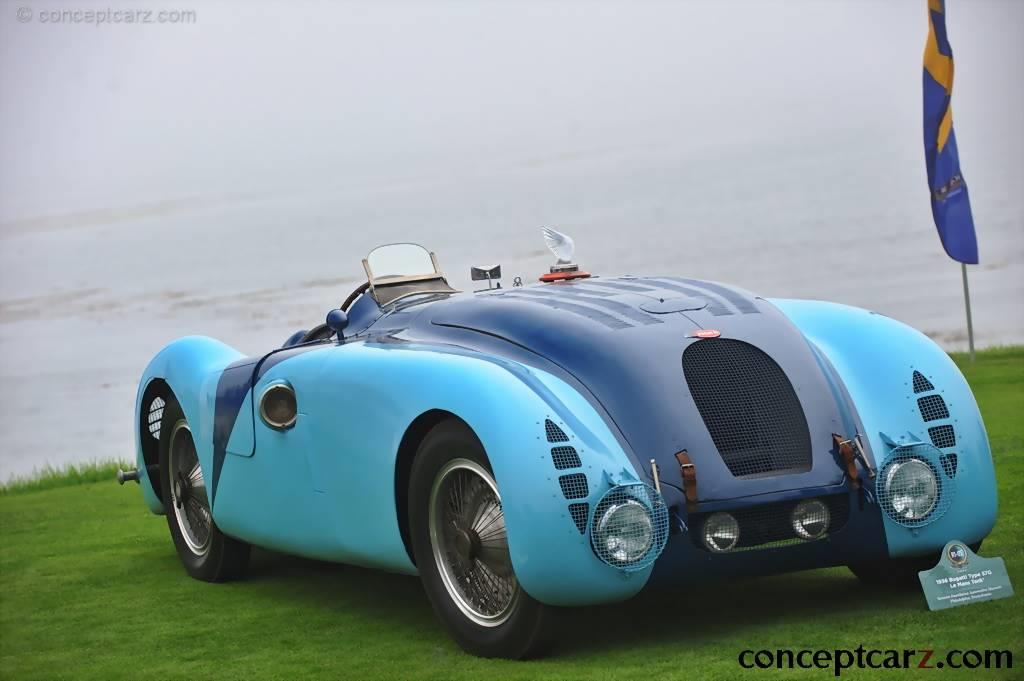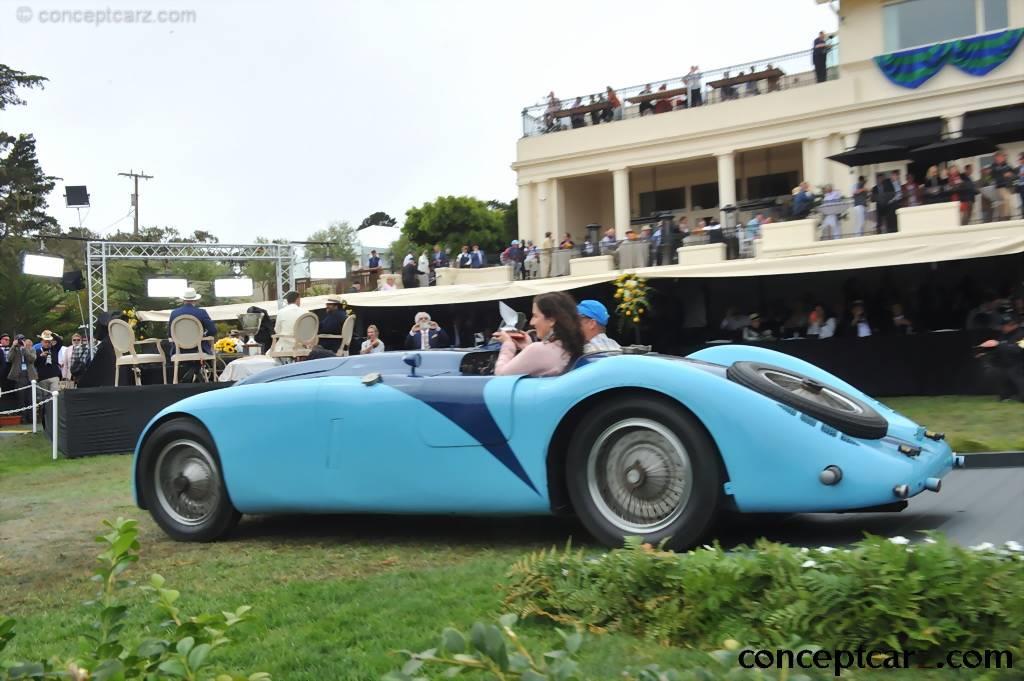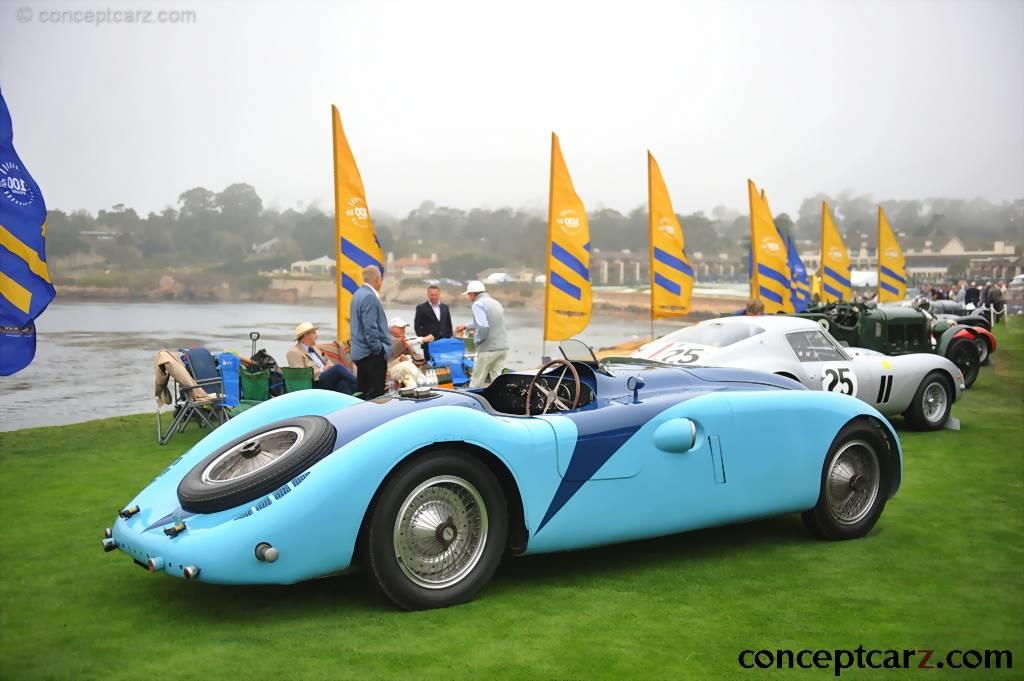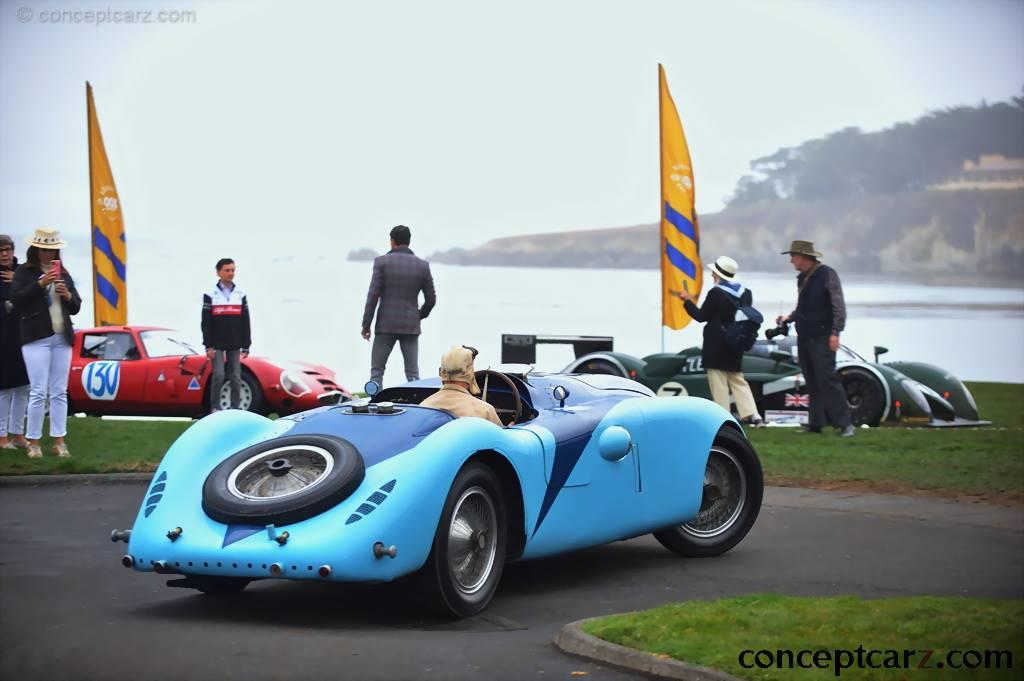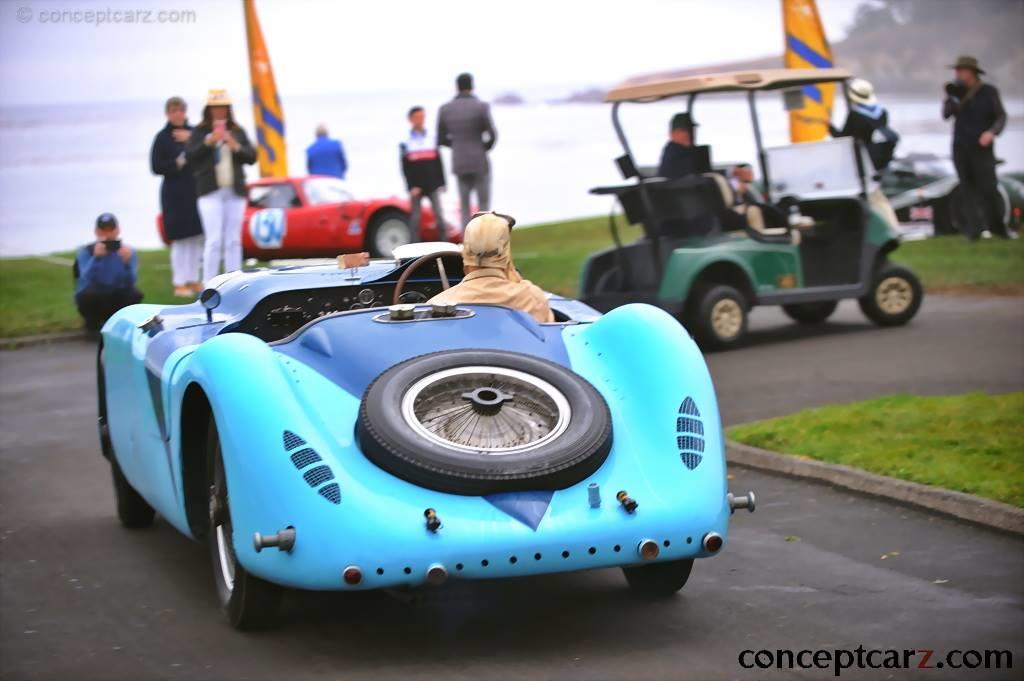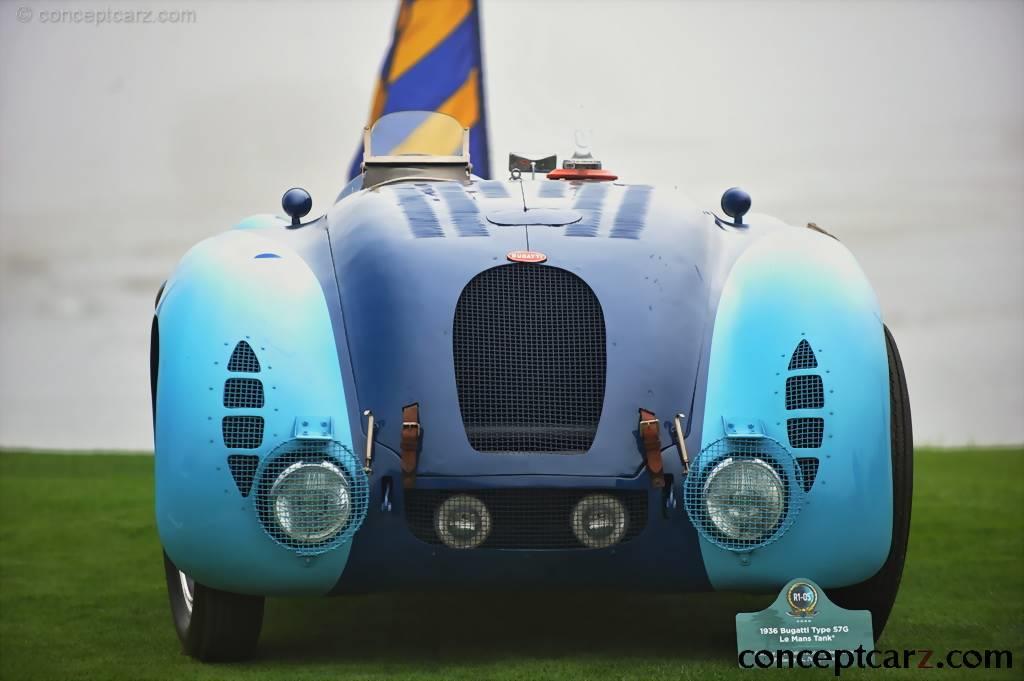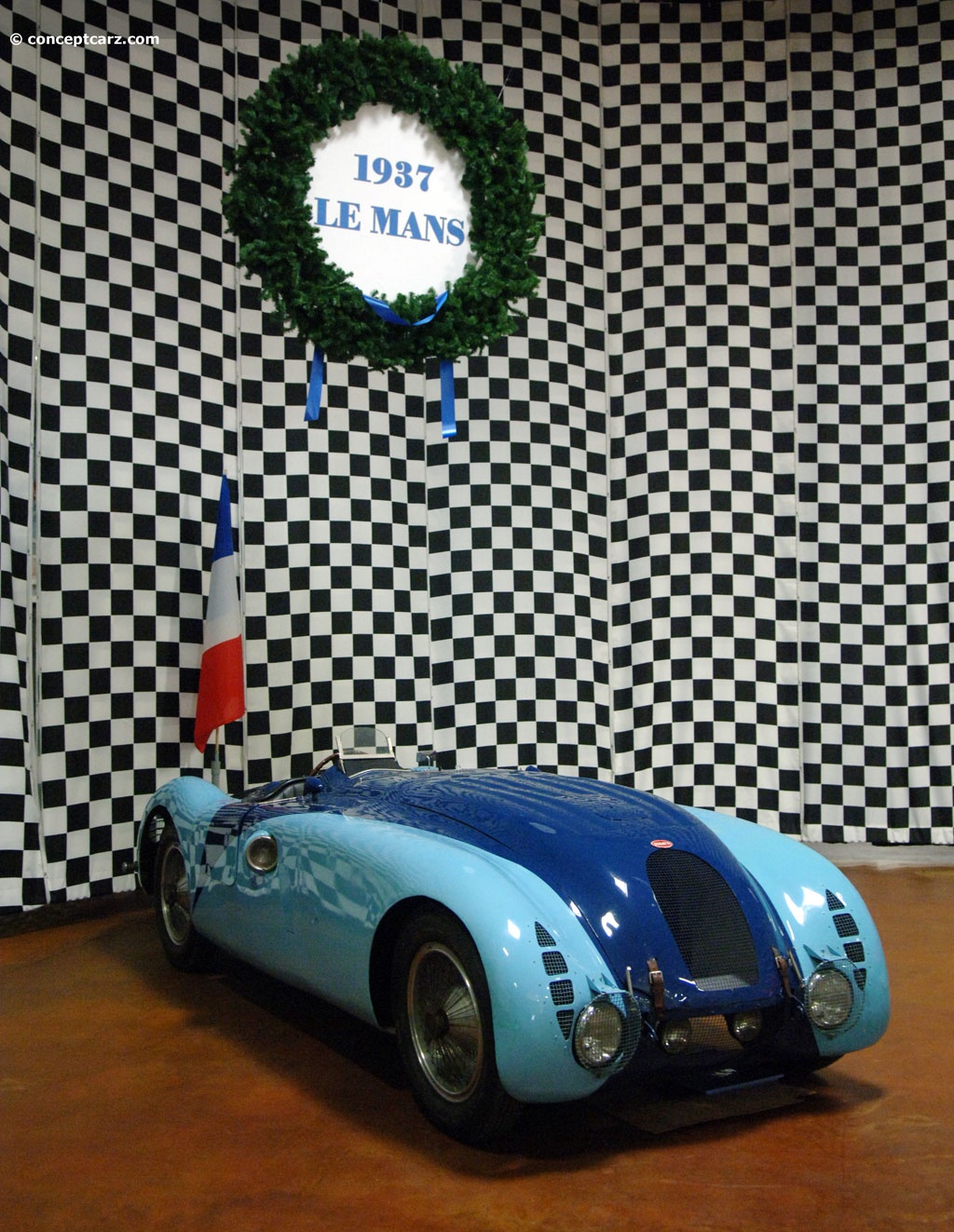Image credit: © conceptcarz.com (Reproduction Or reuse prohibited).
Shortly after the introduction of the road-going Bugatti Type 57 began traversing the roadways, racing versions were created. It was a temptation hard to resist, as they were well-constructed and a very mature breed. Proper bodies were soon constructed to take absolute advantage of the car's mechanical prowess and soon began competing on the world's toughest stages.
A purpose-built version emerged in 1936, dubbed the 57G. It was given the nickname, 'the tank' in recognition of its fully enclosed bodywork. This was not the first time a car had been given this designation; that honor went to the Type 32. A few years later, legendary racer Briggs Cunningham would bring his own version of a streamlined body to LeMans, and the press called it 'Le Monster.' It had a similar, intimidating design that attempted to take advantage of aerodynamic principles.
The Type 57G featured a sloped front with adequate mesh grilles for allowing cool air to pass through the engine and front drum brakes. The aluminum body rested on a steel frame with drum brakes at all four corners. Mounted under the bonnet was an engine similar to the one found in the road-going versions. It was tuned to produce around 200 horsepower and mated to a four-speed gearbox.
The Type 57G enjoyed much racing success in Grand Prix racing and earned many podium finishes. Its aerodynamic body and lightweight construction gave it numerous advantages, including better fuel economy.
The Type 57G was brought to the 24 Hours of LeMans where it was driven by Jean-Pierre Wimille and Robert Benoist to an overall victory, having averaged 85 mph.
The Bugatti marque was absent from LeMans in 1938, but Jean Bugatti was able to convince Ettore to return in 1939. A single entrant was entered, a Type 57C, driven by Wimille and Veyron. It was driven to another victory for the Type 57 and Bugatti legacy, after a Delage driven by Louis Gerard was forced to retire. The winning car was later test driven by Jean Bugatti and wrecked. The accident claimed the life of Jean and the car was never rebuilt.
In total, there were three examples of the Type 57G created in 1936 and the example shown is the only one still in existence. It is part of the Simeone Foundation Museum in Philadelphia, PA and carries chassis number 57335. It was the example that won the 24 Hours of Le Mans in 1937, the French Grand Prix, the Grand Prix de la Marne, and the Grand Prix de Pau.By Daniel Vaughan | Jul 2008
A purpose-built version emerged in 1936, dubbed the 57G. It was given the nickname, 'the tank' in recognition of its fully enclosed bodywork. This was not the first time a car had been given this designation; that honor went to the Type 32. A few years later, legendary racer Briggs Cunningham would bring his own version of a streamlined body to LeMans, and the press called it 'Le Monster.' It had a similar, intimidating design that attempted to take advantage of aerodynamic principles.
The Type 57G featured a sloped front with adequate mesh grilles for allowing cool air to pass through the engine and front drum brakes. The aluminum body rested on a steel frame with drum brakes at all four corners. Mounted under the bonnet was an engine similar to the one found in the road-going versions. It was tuned to produce around 200 horsepower and mated to a four-speed gearbox.
The Type 57G enjoyed much racing success in Grand Prix racing and earned many podium finishes. Its aerodynamic body and lightweight construction gave it numerous advantages, including better fuel economy.
The Type 57G was brought to the 24 Hours of LeMans where it was driven by Jean-Pierre Wimille and Robert Benoist to an overall victory, having averaged 85 mph.
The Bugatti marque was absent from LeMans in 1938, but Jean Bugatti was able to convince Ettore to return in 1939. A single entrant was entered, a Type 57C, driven by Wimille and Veyron. It was driven to another victory for the Type 57 and Bugatti legacy, after a Delage driven by Louis Gerard was forced to retire. The winning car was later test driven by Jean Bugatti and wrecked. The accident claimed the life of Jean and the car was never rebuilt.
In total, there were three examples of the Type 57G created in 1936 and the example shown is the only one still in existence. It is part of the Simeone Foundation Museum in Philadelphia, PA and carries chassis number 57335. It was the example that won the 24 Hours of Le Mans in 1937, the French Grand Prix, the Grand Prix de la Marne, and the Grand Prix de Pau.By Daniel Vaughan | Jul 2008
No auction information available for this vehicle at this time.
Recent Sales of the Bugatti Type 57G
(Data based on Model Year 1936 sales)
Bugatti Type 57Gs That Failed To Sell At Auction
1936 Bugatti Type 57G's that have appeared at auction but did not sell.
| Vehicle | Chassis | Event | High Bid | Est. Low | Est. High |
|---|
Vehicles With Comparable Market Values
Similar sales to the range.
1936 Bugatti Type 57G
• Additional valuation insight and sales data• History
• Specifications
• Image gallery
• Other Bugatti Type 57G model years
